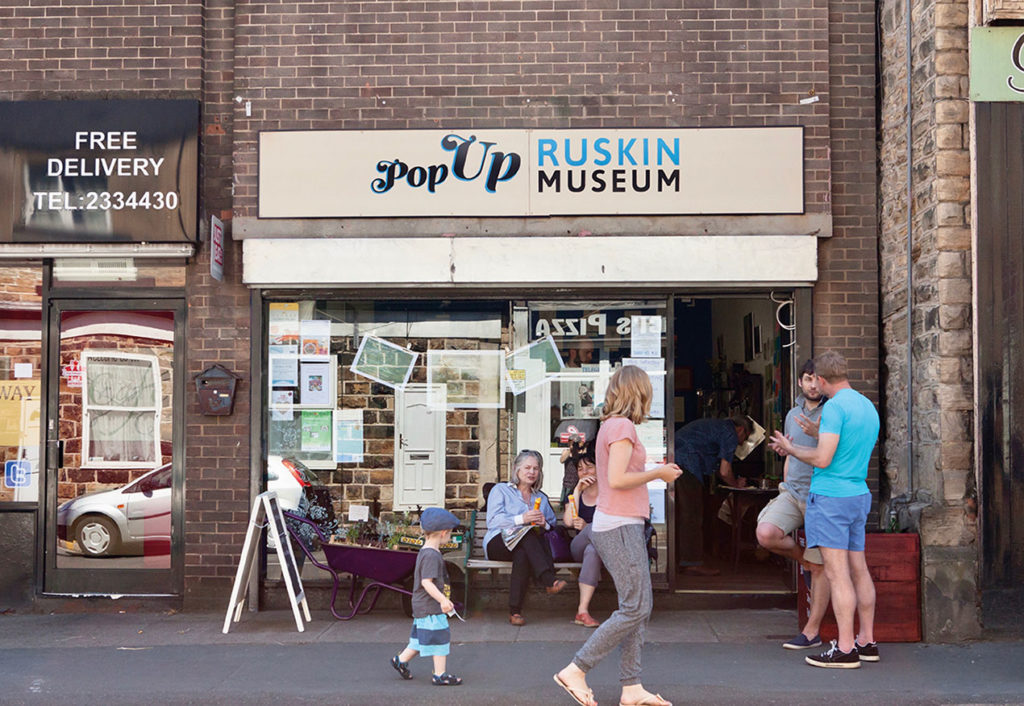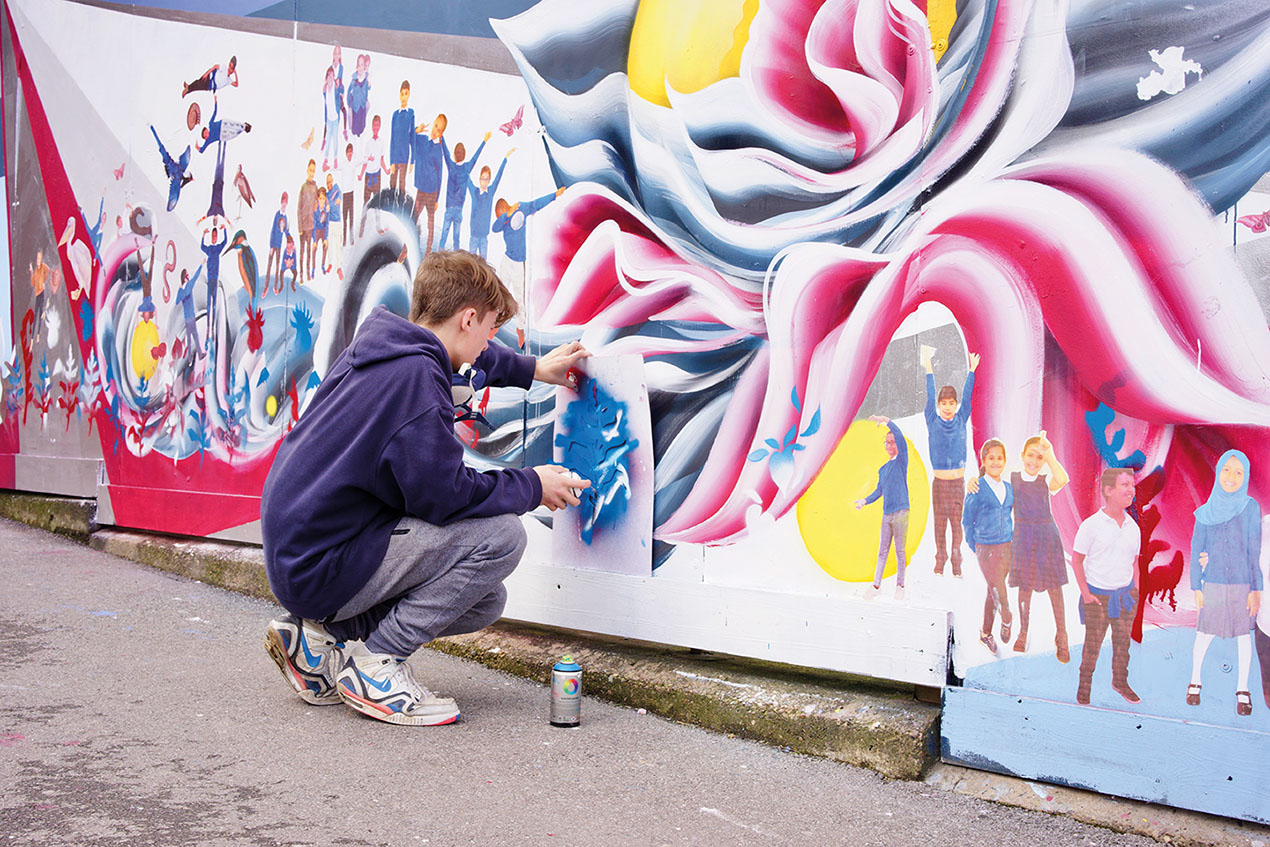Common threads
Community events have been one of the pandemic’s casualties, making loneliness endemic. If you’re planning an event to pick up the fraying edges of your community, Ruth Nutter has some useful tips
Social disconnectedness and loneliness were an issue in UK communities long before Covid-19 struck but pandemic restrictions have significantly heightened the problem. On the upside it has also spurred people on to find ways to connect, and support each other in their neighbourhoods, but while WhatsApp and other digital aid groups have played a helpful role, the lack of real face-to-face contact is really beginning to affect many.
Through years of experience as a community engagement practitioner I’ve refined methods of bringing people physically together in their neighbourhoods, to reconnect them with their own creativity, their local environment and heritage, their area’s future and, most importantly, each other.
You might want to engage people with a local campaign, draw attention to a community building or other community asset at risk, raise awareness of your area’s heritage, deepen engagement with local green spaces or invite ideas for future local plans, or just bring people together for the sake of being together! Whatever your motivation, if you’re wondering how to start bringing a community together in creative, enjoyable and meaningful ways once current lockdown restrictions have eased, here are some examples of projects and activities which have worked, and tips on how to go about making them happen.
These tips are based on what I’ve learned from running a programme of events and activities called Ruskin in Sheffield. The programme drew on Victorian thinker John Ruskin’s connections with the city, and took place in its neighbourhoods, parks, rivers, libraries, community centres and shopping streets.
Many of its projects received public funding but it’s very do-able to set up community events and activities under your own steam as long as you have shelter, basic creative materials and people (you, or volunteers you’re working with) with basic organising, safeguarding and creative skills. You must also work within the national public event guidelines which are covered at the end of the article.

The place to start building community with people is where they live. It sounds obvious, but place is really important.
We set up a Pop-Up Ruskin Museum in an empty shop in Walkley, a neighbourhood in Sheffield, to share local history and offer drawing, painting and bread-dough sculpting activities, and gave local residents space to put on their own events. A big table in the middle meant that people could chat, make or just read. If you want to use an empty shop but there’s no to-let sign up, ask around who the landlord is. They may be keen to let it to you at a low rent for a few months just to have it occupied, and if you’re a charity you can apply to your local council to be exempt from business rates.
Being visibly located on people’s daily routes is important, whether it’s on a neighbourhood road, a city centre high street or in a park.
We worked with two professional artists, school groups and hundreds of passers-by to create a 15m street mural in the Castlegate area of Sheffield city centre, in a day. People wanted to leave their mark on a striking artwork and said how much they enjoyed making something with complete strangers and chatting while they did it. The mural was created on building hoardings on the edge of a construction site so we asked the council if we could use the hoardings and run the event. The council gave us the right contact to speak to at the construction company to let them know what we were doing. The construction workers were very supportive and many of them joined in on the day.
Popping up, especially in unexpected or public places, is a powerful way to engage with communities.
We created a Use & Beauty Parlour for three weeks on the Moor in Sheffield city centre. It was a temporary mobile structure which had a wooden sculpture inside that people could sit in and write on a card where they came from and what they could make. They could try wood, textile and metalwork activities and many people said they enjoyed doing something in town that wasn’t shopping and where there were people to listen to them talking about creative skills they had often loved but lost over time.
You can hire public event standard gazebos to use as pop-up event spaces, but find out whether you can get permission to put it up. Try your local council’s community events department first to check who owns the land you want to run an event on. If it’s public, you need permission from your local council; if it’s private, you need permission from the landowner. Many shopping pedestrianised areas and precincts are managed by private companies.
Ideal creative materials are wallpaper lining rolls, corrugated cardboard, stiff cream card (which makes a change from white), black card to chalk on, air-drying modelling clay and mini cards and canvasses – which are less daunting to have a go with.
A good choice of drawing materials is also essential: black pens, pencils, charcoal, chalk, a wide range of colouring pencils and small boxes of watercolour paint. Plenty of twine and bulldog clips are very handy too, for stringing up what people have drawn or written in the activity space.
Displaying objects like feathers, shells, minerals, leaves and anything else that’s blown onto the street is a great way of breaking the ice. Because most people don’t have time or the materials to draw (and also don’t think they can), it offers a great opportunity for them to just stop, have a go, and chat.
Collaboration, co-ownership, co-creation, co-production – these are all different ways of saying that we need to imagine, plan, make and do things together.
One of our most memorable events was a large scale outdoor film projected on an autumn evening onto the front of Meersbrook Hall, a grade II listed building in Meersbrook Park in Sheffield. Outdoor projections in unusual places are a great way to attract attention, but more importantly, they can show images of the local community from the past and present that create a strong sense of belonging and connection. You can hire a large lens outdoors projector (and someone to operate it) to project your own community images onto a local building.
For people to be drawn out of themselves and connect more widely with the world, they must feel that somebody cares.
Creating a warm and welcoming environment at your activity sounds obvious but it’s important to make sure your body language is as welcoming as your words, and that above all, you listen. We trained hosts for our longer-term events so that everyone would feel welcome. If you’re in a public space, make sure you run your activities with someone else – to stay safe, and because it’s hard to chat, listen and facilitate all at the same time!
Spend time listening to or researching what local community groups, venues and individuals are interested in. Walking the streets and in other public spaces to get a sense of daily local life is vital, and joining in advertised meetings is a good way into a community.
We spent a few months getting to know local community groups to develop one big day of walking, drawing and craft activity across Manor Fields Park and Manor Lodge in Sheffield to find out exactly what kinds of creative activity would be appealing and to involve the local community.
Offering guided walks that join up green spaces or any areas which people don’t normally walk between is a good way of engaging people for the first time with areas that are actually fairly local to them.
When you put on any community event or activity, whether it’s on a street corner, in a park or community centre, you must work within all national and local public event safety guidelines. This includes making sure you:

Leave a reply
Your email address will not be published.